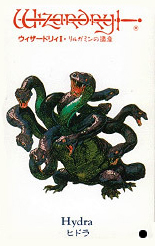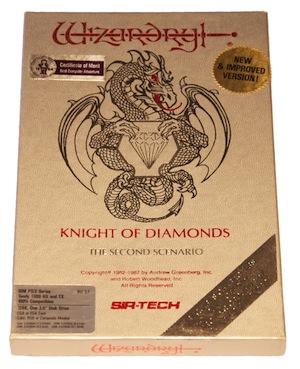
Game Downloads:
(Please note: Wizardry Archives CDROM download is hosted on the Internet Archive).
Documents & other tools:
A note on transfering characters: In order to transfer characters from Wixardry 1 to another scenario you need to load the game with the following command in DOSBOX. This only works for Wizardry 1 through to 3. wiz2.com wiz2.dsk wiz1.dsk Start the scenario and goto (E)dge of town, (U)tilities, (M)ove characters and then select the characters you want to move. In this example your are loading the Knight of Diamonds scenario and transfering your characters from Wizardry 1. The.dsk files are the "Scenario Disks" where your characters are stored. Big thanks to James W. for working this out.
Notes about game versions.
MSDOS release: This is the best version to use if your running Dosbox on new Windows hardware. It includes all wizardry games from 1 to 5. PC Booter: A booter is a game (most common), or program (not so common, but MCS and PCS are examples) that doesn't need any operating system to work. You just stick the disk into the drive and boot, hence the name. Booting games (on the PC) were common in the early and mid eighties. The concept has many advantages for the programmers. They didn't have to consider that any other program were interfering, so they could hook any interrupt they wanted, without bothering to call the original handler. They had the machine entirely for themselves, all memory open for use. No poorly written OS to consider, and the disk could be in virtually any layout (which also was a great thing for protections!). Apple II release: This can be used on the original Apple II harware or on an Apple II emulator for Windows/MacOS. Kryoflux images: Copy protected floppy disk images are usually archived with a Kryoflux. You must write these to a floppy disk using the Kryoflux hardware, or convert them to another format with the HxC disk tools. Transcopy images: Copy protected floppy disk images are sometimes also archived with a Central Point Deluxe Option Board AKA a TransCopy card. This is a very old, but once popular device. You must write these to a floppy disk using a TransCopy card. Note that the Transcopy software expects "IMG" extensions, but to avoid conflicts we must use the ".TC" file name extension. Some emulators directly support the TC image format. It is possible to convert TC to other formats.
| ||||
|
Wizardryarchives.com Home | Scenarios | Monsters | Maps | Downloads | News | Contact Us |


 Wizardry I to VII players manual.
Wizardry I to VII players manual.